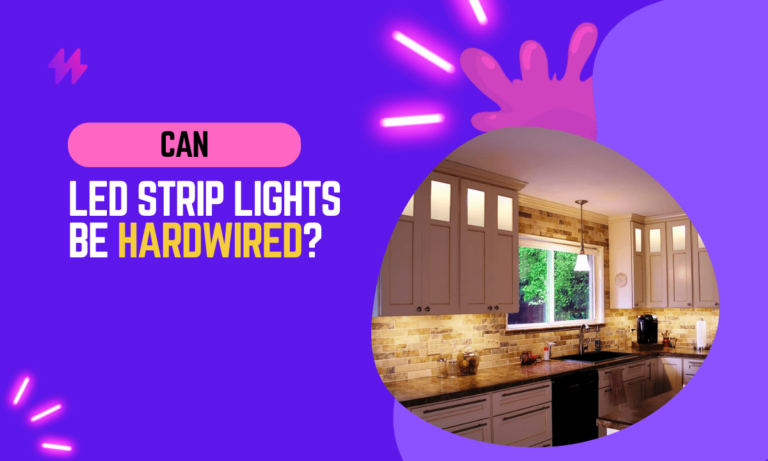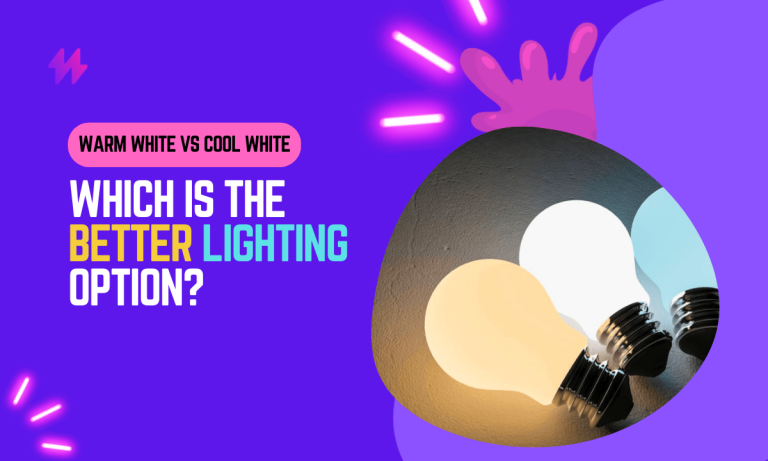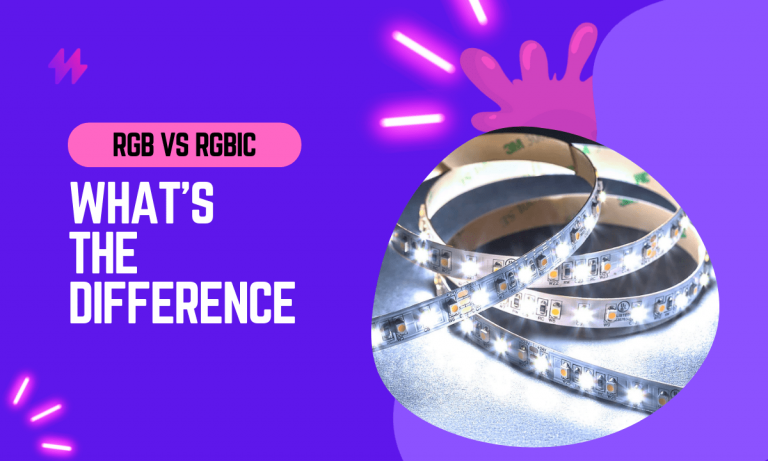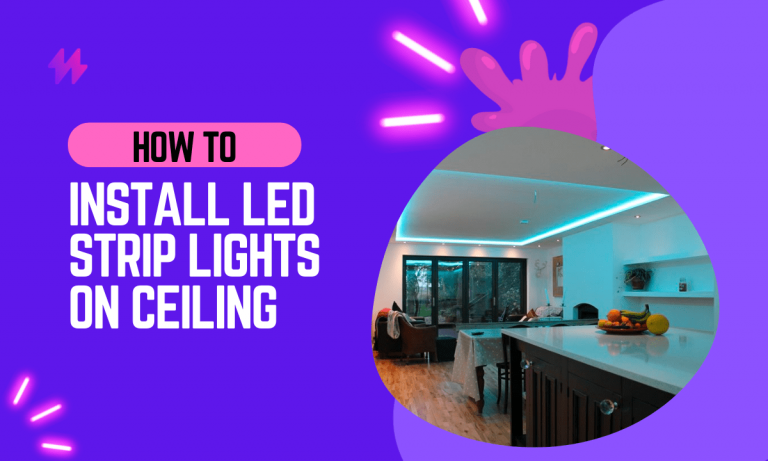How Do LED Faucet Lights Work?
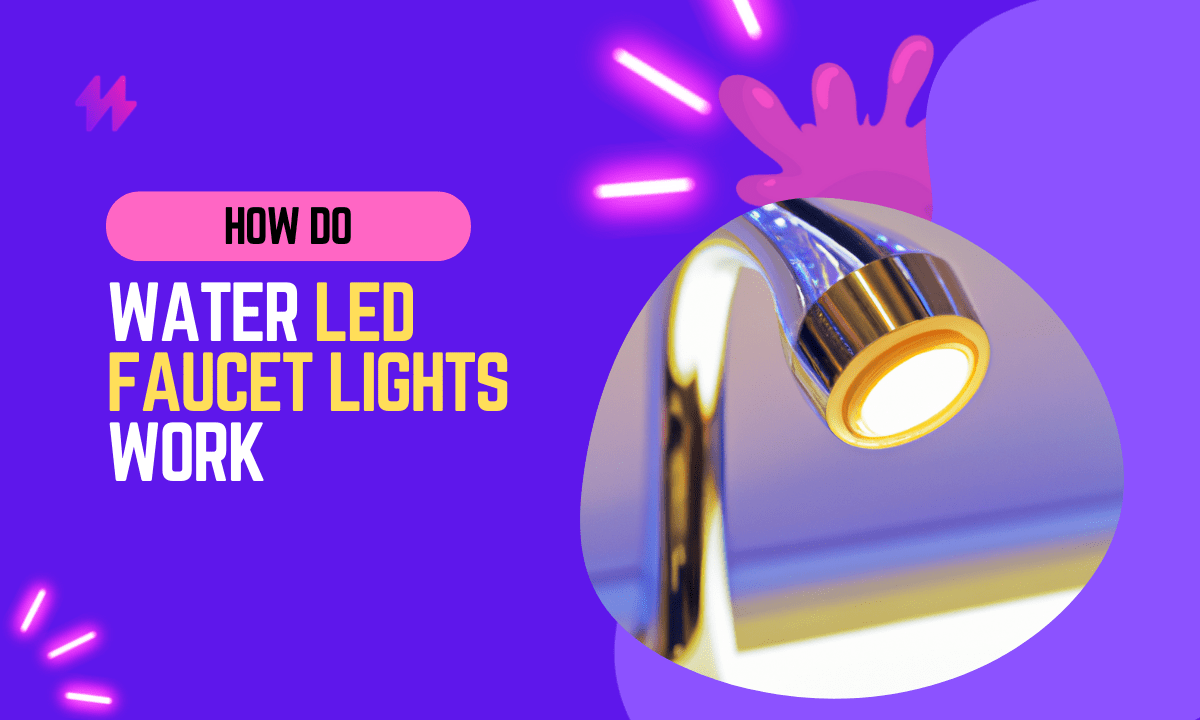
Led faucet lights are a relatively new technology that is quickly gaining in popularity. There are many benefits to using LED faucet lights, including energy savings, durability, and longevity. But what exactly are LED faucet lights, and how do they work? In this article, we will explore the basics of LED faucet lighting technology and discuss some of the key benefits of using LED faucet lights.
Unlike traditional faucets, which use water to wash your hands and provide you with light, LED faucet lights use cutting-edge electronics to accomplish both tasks.
LED faucet lights provide an innovative touch to home décor by enhancing the functionality of standard faucets. They operate using a sensor faucet mechanism that allows the lights to function depending on the water pressure on the faucet, offering a long-lasting lighting solution for both kitchen and bathroom sink faucets.
Understanding How LED Faucets Function: A Deep Dive into Their Mechanisms
So how exactly do these lights work? We have a detailed guide on how motion sensors work with LED lights. For now, let’s move ahead with Faucet lights.
At its most basic level, an LED faucet light consists of three main components:
- Sensor
- Electric circuit board
- LED bulb
The sensor is embedded within the faucet itself and is responsible for detecting when your hand comes into contact with the surface of the sink. When it detects this contact, it sends a signal to the electric circuit board inside the faucet housing. This electric circuit board then activates the LED bulb, which emits a bright light to help you wash your hands.
The faucet is a great way to make your house look more modern and stylish. There are many different colors that can be produced by LED lights in the sink, from reds or greens when it’s hot water right up until they turn blue at colder temperatures! It might seem like this just changes depending on what mood you’re feeling but sometimes these color changers will also do things such as glow white if there has been heavy rainfall outside which makes them even better.
Also read: How to choose the right color temperature for Kitchen
The fascinating aspect of LED faucet lights is how they incorporate modern technology into everyday items like kitchen faucets and bathroom faucets. These innovative designs not only enhance the aesthetic appeal of a kitchen sink or vessel sink but also provide practical benefits, such as touch-free operation and color-changing capabilities that respond dynamically to water temperature.
Understanding How Do LED Faucet Lights Work: Reasons to Have One at Home

There are many reasons why you may want to invest in an LED faucet light for your home. Some of the key benefits include:
Investing in an LED faucet light can elevate your décor with its modern design and practical functionality. Featuring touch-free sensor faucets and color-changing capabilities, these innovations transform your old faucet into a stylish tap that not only underscores your countertop but also creates an enchanting illuminated water feature for your kitchen sink faucet or bathroom basin vessel.
- Energy savings: Unlike traditional faucets, which use water to wash your hands and provide light, LED faucet lights use cutting-edge electronics to accomplish both tasks. This means that they use significantly less energy than standard faucets, resulting in significant energy savings over time.
- Durability and longevity: Led faucet lights are made from high-quality materials that are designed to last for years. They also have very few moving parts, making them extremely durable and reliable. Whether you’re looking for a long-term lighting solution or simply want something that will look great and function flawlessly for many years to come, LED faucet lights are an excellent choice.
- It Makes Washing In The Dark Easier: Led faucet lights are extremely bright, making it easier to see what you’re doing even when the rest of your home is dark. Whether you need to wash up after a late night out or simply want to do the dishes in peace and quiet without having to turn on any other lights, LED faucet lights give you the freedom and flexibility to work whenever and however you want.
How to Properly Install LED Faucet Lights for Optimal Performance
Installing LED faucet lights is a relatively simple process that can typically be completed in just a few steps. Here are the basic steps to get started:
- Turn off the water supply and drain any remaining water from your sink or basin.
- Disconnect the existing faucet by loosening the retaining nuts underneath the sink using a wrench.
- Fit your LED light fixture into place, securing it with the retaining nuts previously removed from your old faucet and tightening everything up using your wrench.
- Reconnect the water supply and turn on your new LED faucet light! It is recommended to leave it running for at least 30 minutes to allow air bubbles to escape and ensure proper functioning.
If you encounter any issues while installing your LED faucet lights, such as problems with water pressure or flickering lights, it is important to consult the product manual for troubleshooting tips and advice on how to get your light up and running smoothly again.
With a little bit of patience and some basic plumbing skills, however, you should be able to install your new LED faucet lights without any problems. And once they’re installed, you’ll love the style and convenience that these innovative light fixtures add to your kitchen or bathroom!
Also read: How to choose Bathroom Color Temperature
To ensure a smooth installation of your LED faucet lights, it’s essential to check compatibility with your existing fixtures, like your mixer tap or sink faucet gold finishes. Additionally, understanding how do LED faucet lights work will help you troubleshoot any issues related to the operation of the lights function, especially if they change unexpectedly or stop glowing altogether after installation.
FAQs: Understanding LED Faucet Lights and Their Benefits
Q: Why should I choose LED faucet lights over traditional lighting options?
A: There are many benefits to choosing LED faucet lights over more traditional lighting options, including energy savings, durability, and ease of use.
Q: My LED Faucet Is Not Lighting Up: What Can I Do?
A: If your LED faucet lights stop working, there are a few potential causes to consider. One possibility is that the light fixture may not be properly connected to the water supply or outlet. Another possible cause could be an issue with your water pressure, which can sometimes interfere with proper lighting. If these issues don’t resolve the problem, it’s best to consult a professional plumber for further assistance and guidance.
Q: How Do I Maintain Led Faucet Lights?
A: Maintaining your LED faucet lights is simple and straightforward. The main thing to keep in mind is that you should never use harsh chemicals or abrasive cleaners near the light fixture, as these can damage delicate electronics and cause issues with functionality. Otherwise, cleaning your LED faucet lights regularly with a soft damp cloth should be sufficient for keeping them looking their best.
Choosing LED faucet lights not only enhances the aesthetics of your bathroom sink but also promises energy-efficient operation, which is a significant advantage over traditional lighting. With features like color-changing faucet aerators, these innovative LED faucets respond dynamically to water temperature, ensuring that the light changes from a warm glow to a cool blue as needed.
Final Thoughts on LED Faucet Lights: Key Insights and Benefits
In conclusion, LED faucet lights are an innovative and visually appealing addition to any modern bathroom or kitchen, enhancing the functionality and aesthetic of standard fixtures. These devices operate using the mechanics of water flow through the faucet, which powers a small hydroelectric generator that, in turn, activates the LED lights. This ingenious integration of technology eliminates the need for batteries or electrical wiring, ensuring that the lights are both energy-efficient and environmentally friendly. LED faucet lights typically include temperature sensors that change the color of the light based on the water temperature – a feature that is not only visually striking but also serves as a practical safety measure, indicating whether the water is hot or cold at a glance.
Moreover, the installation of LED faucet lights is generally straightforward, often designed to be user-friendly and compatible with standard faucet types, which makes them accessible for DIY enthusiasts looking to upgrade their home fixtures. The appeal of these lights extends beyond their functional benefits; they also offer an element of fun and interactivity to everyday tasks like washing hands or doing dishes, making them especially popular in households with children. As LED technology continues to advance, these faucet lights are becoming increasingly durable and capable of offering a wider spectrum of colors and effects, enhancing user experience and providing an additional layer of customization for home decor. Overall, LED faucet lights represent a melding of utility and innovation, bringing a touch of technology to everyday water fixtures.
How Do LED Faucet Lights Work | The Science Behind LED Faucet Lights
LED faucet lights operate through a clever mechanism that marries the flow of water with innovative technology. Understanding how do LED faucet lights work involves appreciating the role of the small dynamo with impeller inside the faucet. This component generates electricity as water flows through it, powering the LEDs embedded in the faucet design. Depending on the water pressure, the lights function dynamically, illuminating in various colors—often red for hot water and blue for cold. The LED light enhances the aesthetics of fixtures like bathtub faucets or a glass spout bathroom sink, creating an inviting atmosphere, especially at night. The faucet chrome finish adds a touch of elegance, while the mesmerizing led color transforms an ordinary light water faucet into a captivating feature for bathroom sink or basin vessel setups. When water flow stops, so does the illumination, providing an energy-efficient solution that complements the overall design.
How Do LED Faucet Lights Work | The Role of Temperature in LED Activation
LED faucet lights operate through a fascinating mechanism influenced by temperature and water pressure. The LED light illuminates as water flows from the faucet, showcasing vibrant colors based on the water temperature. For example, cold water, typically from a cold water mixer, might trigger a blue glow, while hot water could result in red. Each faucet features a small dynamo with an impeller inside, generating power to light the LEDs. This dynamic ensures an engaging visual element in spaces like a waterfall bathroom sink or a finish bathroom sink, making them not only functional but also aesthetically pleasing.
The lights function depending on the water pressure on the faucet, which means that in moments of low pressure, the LED light may dim or even stop completely. As the water flows more freely, the illumination reactivates, enhancing the appeal of your led bathroom faucet. The incorporation of LED technology in faucet design provides a unique way to monitor water temperature while adding a striking visual feature. This innovation allows users to better appreciate the water color and its relationship to temperature without needing additional devices.
How Water Flow Powers LED Lights
Water flow is critical for powering LED faucet lights. Inside the faucet, there is a small dynamo with an impeller that harnesses the kinetic energy generated by running water. As water moves through the faucet basin vessel, the impeller spins, converting the flow into electrical energy. This process is integral to understanding how do LED faucet lights work, allowing them to illuminate without being plugged in.
Once the water ceases to flow, the LED lights naturally turn off. Light stops when the water flow halts, ensuring energy efficiency. This design not only conserves power but also enhances the longevity of the led glass used in the faucet. By utilizing the force of water, LED faucet lights provide a striking visual effect in a home while maintaining functionality.
Advantages of Using LED Faucet Lights
LED faucet lights offer numerous benefits that enhance both functionality and aesthetics in your home. They operate by harnessing the flow of water, as there is a small dynamo with impeller inside the faucet that generates energy to power the LED. This innovative design eliminates the need for batteries or external power sources. By understanding how LED faucet lights work, homeowners can enjoy energy efficiency and cost savings while also elevating the visual appeal of their kitchens or bathrooms. These lights not only serve as a practical feature but also create a captivating atmosphere with their colorful displays.
Energy Efficiency and Cost Savings
LED faucet lights operate on low power, which inherently contributes to energy efficiency. Understanding how do LED faucet lights work reveals that they convert electrical energy into light with minimal waste. This efficient energy use results in lower electricity bills for households, making them an attractive option for budget-conscious consumers.
Cost savings are further enhanced by the longevity of LED lights compared to traditional incandescent bulbs. Knowing how do LED faucet lights work highlights their ability to last significantly longer, often up to 25,000 hours or more. This reduces the frequency of replacements, thereby saving money on both purchases and waste disposal over time.
Enhancing Aesthetic Appeal in Your Home
LED faucet lights serve not only a functional purpose but also dramatically enhance the visual appeal of your kitchen or bathroom. By integrating colorful LED lights, the faucet transforms into a striking focal point, elevating the ambiance of any space. Homeowners often wonder how do LED faucet lights work to create this captivating effect. The combination of light and flowing water can create a mesmerizing experience, turning mundane tasks into enjoyable moments.
The versatility of these lights allows for customization according to personal style and preference. Whether it’s a soft glow for a relaxing bath or vibrant colors for a lively kitchen, these lights adapt to various moods. Understanding how do LED faucet lights work can help you select the perfect fixture to complement your decor. They not only illuminate but also add a fun, modern twist that captivates guests and enhances overall home aesthetics.
Different Types of LED Faucet Lights
LED faucet lights come in various types, each offering unique features to enhance your kitchen or bathroom. Color-changing LED faucet lights are designed to adjust their hue based on water temperature, providing both functionality and an entertaining visual effect. Understanding how do LED faucet lights work reveals that these lights utilize sensors to detect temperature changes, creating a dynamic display. Standard LED faucet lights, on the other hand, typically emit a fixed color and serve to illuminate the water flow without any temperature-sensitive variation. Each type has its advantages, making it essential to choose one that best suits your needs and preferences.
ColorChanging LED Faucet Lights
These innovative lighting fixtures utilize temperature sensors to create an immersive experience in your bathroom or kitchen. As the water temperature changes, the LED lights react accordingly, altering their color to indicate whether the water is hot, warm, or cold. Understanding how do LED faucet lights work is essential for appreciating the functionality behind these devices, as the color change serves both aesthetic and practical purposes.
The vibrant colors not only add a decorative touch but also enhance safety by alerting users to potential temperature hazards. People can easily see when the water is reaching a scalding temperature, making it a valuable feature for homes with children or elderly residents. This dynamic feature showcases how do LED faucet lights work effectively, combining style with functionality to elevate any space.
Standard LED Faucet Lights
These fixtures operate on a straightforward principle of utilizing a low-voltage LED light embedded within the faucet. Understanding how do LED faucet lights work involves recognizing that these lights are typically activated by the flow of water. As water passes through the faucet, a small turbine usually located within the unit generates electrical energy. This energy powers the LED light, illuminating the water stream without needing a separate power source.
Since they are powered directly by water flow, these lights offer both efficiency and convenience. Users can easily enjoy bright, colorful lighting effects without worrying about batteries or electrical connections. The design is often simple, making installation quick and straightforward. Knowing how do LED faucet lights work can help consumers select models that best suit their needs and preferences.
Maintenance Tips for LED Faucet Lights
Proper care is essential for ensuring the longevity of LED faucet lights. Understanding how do LED faucet lights work can guide you in maintaining their functionality and appearance. Regular cleaning of the faucet and the lights themselves prevents mineral build-up that can obstruct water flow and diminish the light’s brightness. Periodic checks can help identify any connection issues or signs of wear and tear. By paying attention to these maintenance tips, you can enhance the performance of your LED faucet lights, allowing them to operate efficiently for years to come.
Cleaning and Care for Longevity
Regular maintenance is crucial for ensuring the longevity of LED faucet lights. Understanding how do LED faucet lights work helps homeowners appreciate the importance of keeping the fixture clean and free from mineral buildup. Hard water can leave deposits that may block the light or affect its performance. A soft cloth or sponge with mild soap can effectively remove grime without damaging the LED components.
Checking the connections and the LED unit periodically can also prevent issues from arising. Knowing how do LED faucet lights work enables users to identify potential problems, such as flickering or dim lights. If any irregularities are observed, it is important to inspect the faucet light for any obstruction or damage. This proactive approach will prolong the lifespan of the device and maintain its visual appeal.
Troubleshooting Common Issues
One common issue users may encounter with LED faucet lights is inconsistent lighting or flickering. This problem often arises from irregular water flow or the accumulation of debris. Understanding how do LED faucet lights work is crucial for diagnosing the problem. Regularly checking and cleaning the faucet aerator can enhance water flow and ensure that the LED lights activate as intended.
Another challenge may be related to the LED light not activating at all. This could stem from a lack of water pressure or a malfunction within the light unit itself. Familiarity with how do LED faucet lights work can help users determine whether to clean the tap or consider a replacement. Inspecting the connections and ensuring everything is securely in place can often resolve these activation issues.
Conclusion
Understanding how LED faucet lights work involves recognizing the interplay between water flow and temperature sensitivity. These innovative fixtures illuminate in response to water movement, harnessing the kinetic energy generated as you turn on the tap. The temperature of the water also plays a crucial role in activating the LEDs, with many designs featuring color-changing functionalities that visually indicate water temperature. This blend of technology not only enhances functionality but also adds a modern aesthetic to your space. By exploring how do LED faucet lights work, homeowners can make informed choices that elevate both the utility and charm of their bathrooms or kitchens.

